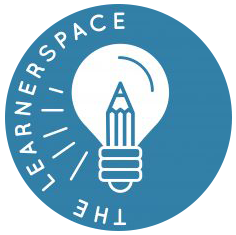Despite the state of quasi global confusion that seems to be enveloping education, there is clear consensus that creativity and critical thinking are some of the new alphabetization skills in a world where, irreversibly, contents are infinitely and easily available, just a few keystrokes or screen touches away. If everything and everything can be found, going beyond factual knowledge in terms of interpreting knowledge and using it creatively is definitely a skill that can make a difference.
In that context, it makes sense that design as a preferred pedagogical embodiment of these traits has become ubiquitous in schools all over the world. The maker movement, design thinking and various other incarnations of design processes applied to the classroom are ever more present in schools as a way to make true on the implementation of critical thinking, and, more specifically, creativity. Makerspaces are being built in schools all over the world, and students can playfully be found tinkering with materials and assorted stuff on their way to morphing into finished become projects that are meaningfully displayed in schools to the pride of student creators.
And, even though design and the various protocols that target it within the classroom do, indeed, constitute a very valid way of exercising and implementing critical thinking, creativity and also collaboration, there is a missing link, one that, in my view, threatens the maker movement to become one more passing fad in the well populated graveyard of ephemeral educational trends. In order to truly make of design a real and meaningful embodiment of all that is good about the new learning paradigm, there needs to be an explicit link with the lifelong learning process and technology as the privileged catalyst to both source that knowledge as well as document the process.
In effect, if design seeks to replicate a future real life situation, designers need first to learn and research about the topic that underlies the design project, in ways that are systematic and rigorous, tapping into Internet sources whilst developing insights regarding the nature of the learning process in the context of an intrinsically dynamic redefinition of knowledge. All too often, with the well-intentioned goal of fostering creativity as an overarching goal, students are thrown immediately into the tinkering phase of design, playing around with the elements available but without previously engaging in a rigorous research process that essentially informs the design process. Many of the stages involved in these processes righty entail redesign and review, but, unfortunately, many times without supplementing the said iterations with an explicit charter to learn about the topic at stage and provide a solid knowledge foundation to the design.
Technology should be an integral part of the design process, not only as a natural catalyst to open up, literally, a whole world of learning, but also as a conduit for collaboration and a platform for documenting the design process. Being able to document all the stages in the design process in ways that make them accessible to all groups and participants provides for the cross feeding of ideas, so that the design iterations also benefit from incorporating ideas by other groups, as an essential trait of the so much desired communities of innovation.
In sum: design can truly become a valid and long sought after pedagogical manifestation of the principles of 21st Century Learning only if it is not implemented as a purely instrumental and procedural exercise of creativity, since doing so fails, essentially, to replicate the future scenario of facing a design problem. Learning is intrinsically linked to designing and there can be no meaningful exercising of creativity and critical thinking without a clear path towards utilizing technology to research and investigate the underlying themes, in an environment that incorporates technology as the medium to document, collaborate and crowdsource the creative process in a true community of innovation.

